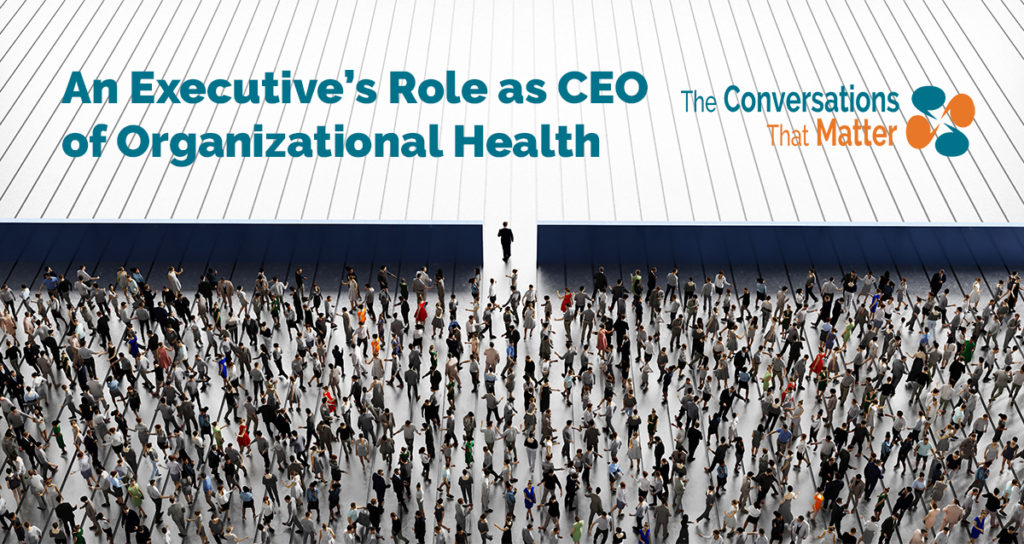
An Executive’s Role as CEO of Organizational Health
The holidays tend to be a time that I get to read a couple of books. The rest of the year, I collect them. In other words, Amazon is so kind as to send me all the books my heart desires, but I really only dive in a couple of times a year. However, when I do it is glorious bliss! I also find that every little idea feels magical.
Take, for instance, this morning. It’s the Saturday after Thanksgiving, and I picked up The Four Obsessions of the Extraordinary Executive, by Patrick Lencioni – one of my favorite authors. I knew it would be an easy read that I could likely get through before the rest of the family was ready for our weekend adventures.
But, alas, my mind has other ideas. I got all of three pages into the introduction (NOTE: not even chapter 1) when these two paragraphs hit me square between the eyes:
I believe that all successful organizations share two qualities: they are smart, and they are healthy. An organization demonstrates that it is smart by developing intelligent strategies, marketing plans, product features, and financial models that lead to competitive advantage over its rivals. It demonstrates that it is healthy by eliminating politics and confusion, which lead to higher morale, lower turnover, and higher productivity.
…this point is critical—no one by the head of an organization can make it healthy. While executives often successfully delegate responsibility for strategy, technology, marketing, or finance to their direct reports, they cannot assign responsibility for their organization’s cultural well-being to anyone but themselves.
It is such a simple philosophy. So, why is it so hard to execute? And, why do so few executives understand the importance of their role in organizational health?
The Definition of Good Leadership Changes
Well let’s just stop for a second and reflect on our respective educations. I don’t know about you, but I don’t recall taking classes on emotional intelligence, empathy, and vulnerability. In fact, author Brene Brown has been instrumental in bringing these key leadership elements into the mainstream, but only in the last 10 years. These characteristics weren’t widely recognized attributes of a good leader when most of us were in college. That leads me to believe that unless a leader of my generation is an active learner, they may very well be stuck in old ways of leadership taught to them in their school years.
What a loss — for them and for those they lead.
The leaders of today and of the future are embracing the ideas that Lencioni and Brown preach. They understand that their roles as heads of organizations has less and less to do with the tactical, and more and more to do with creating and supporting cultures that are open-minded, vulnerable, learning, inclusive, and kind.
Shaping What’s Next
2021 is coming to an end. That liminal time between seasons feels empowering and new to me. I love the sense that I can stop, wipe the slate clean (or at least clean it up), and create anew.
I challenge you to take time to do the same.
As you have some quieter time during the holiday season, here are a few books that I encourage you to pick up. Some are new. Some are old. All are helpful in understanding an executive’s role in organizational health.
Book Recommendations
The Four Obsessions of an Extraordinary Executive, by Patrick Lencioni
ANYTHING by Brene Brown, but Dare to Lead and Braving the Wilderness are a couple of my favorites
The Heart of Business, by Hubert Joly
The Art of Gathering, by Priya Parker
Think Again, by Adam Grant
Leadership & Self Deception, by Arbinger Institute
